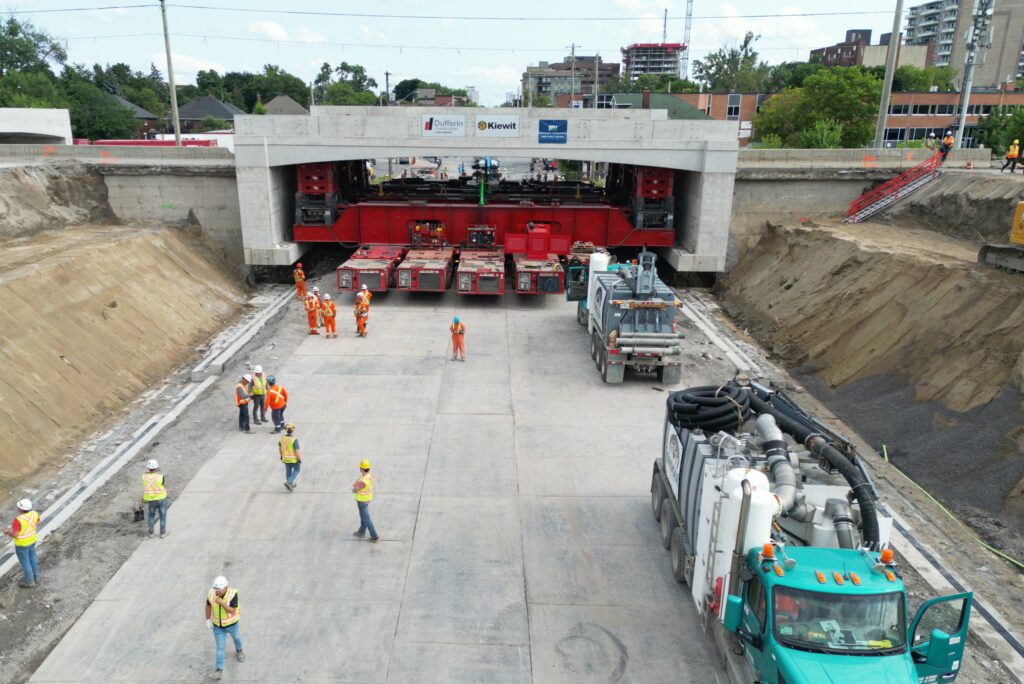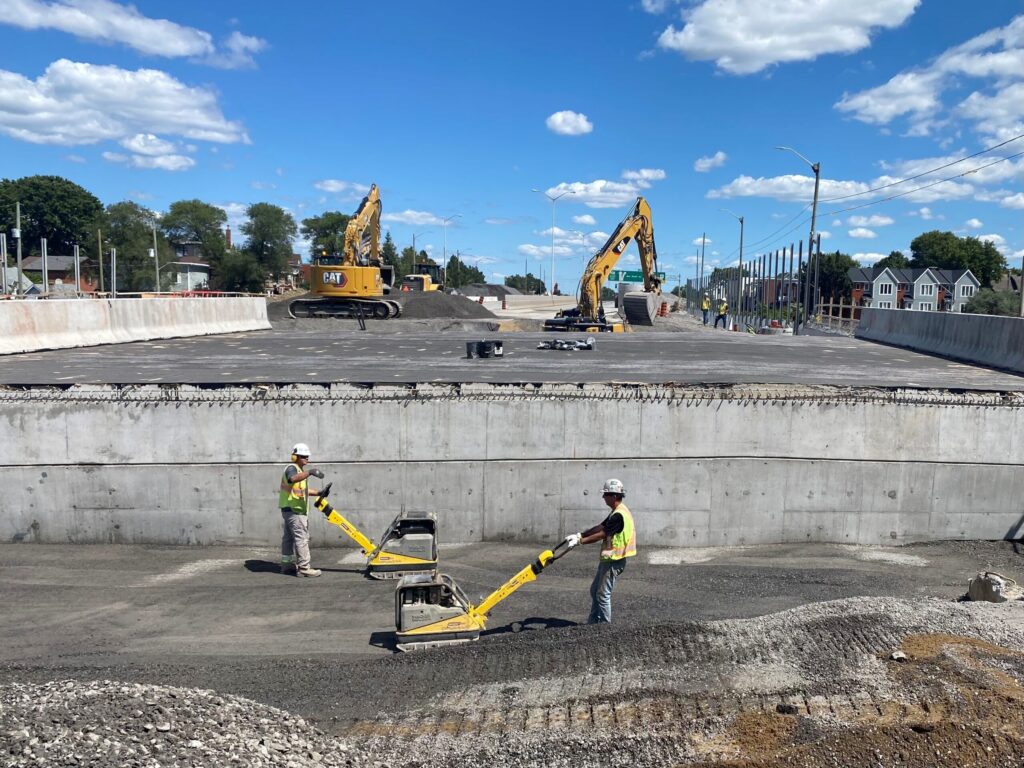The roar of vehicles on Highway 417 is the constant soundtrack of Ottawa, the busy capital city of Canada. The freeway known as the Queensway through Ottawa is a major artery of the city, home to a million residents. It is a vital link not just within the city, but also serves as a high-speed connection to Montreal.
When Ontario Ministry of Transportation leaders were faced with the task of demolishing and replacing 11 outdated bridges across five sites, they knew they needed a solution with minimal disruptions to the city’s daily traffic rhythms.
Ultimately, the provincial government chose the strategy known as rapid bridge replacement (RBR). Instead of building the bridges on-site, they are prefabricated off-site close to the final locations, then moved into place. This method exchanges years of lane closures for an 82 hour highway shutdown known as a super weekend.
Kiewit and Dufferin Construction Company, as joint venture Kiewit-Dufferin Midtown Partnership, were awarded the highway project. The project includes replacing the bridges, as well as other improvements like better drainage, new retaining walls, pavement and electrical work.
Since 2021, four of the five RBRs have been successfully moved and are in operation. The final RBR on the Preston Street bridge is slated for later this year.
What it takes
Though a shortened highway closure for rapid replacement seems ideal compared to the traffic and staging headaches of traditional replacements, RBR jobs are not always possible because specific requirements need to be met.
“Visibility is quite daunting at the beginning of RBR projects,” said Project Manager Terence Yang. “At the end of the day, if you’re in the city and don’t have real estate close to the highway, you can’t do an RBR.”
The furthest travel path the project team experienced was 300 meters, about the size of three football fields. Picking up a bridge and moving it sounds easy, but in practice there’s more to it.
“Those are heavy enforced structures that are stiff — the equipment we fly in from all over the world to move it can only go so far and be moved over manageable terrain. You can’t navigate slopes more than 2%,” said Yang.
However, when the circumstances are right for the RBR method, as was the case for this project, it becomes an effective construction strategy.
While the super weekend gets most of the attention from the community, the success of this project depends on year-long planning, months of construction and close coordination with the many stakeholders such as the Ministry, city and specialized subcontractors.
“This involves a lot of effort and requires a lot of tenacity from our team, especially the younger team members who are learning on the job,” Yang said. “It’s a rare and challenging project that the team should be proud of.”
Bridges can take up to eight months to build in what is called a casting or laydown yard where the bridges can be prefabricated nearby before moving to their final destination.

“What’s really special about our project is how we moved the whole bridge. Usually, only the deck is moved on footings and abutments that are already cast in place on final location. But for us, we built the entire bridge and then lifted it into position,” Yang said. “This method is called a rigid frame structure, where everything — the footings, abutment and deck are lifted in one go.”
The super weekend ticking clock
When the super weekend arrives, it is like a high-stakes puzzle. First, the heavy machinery is tested to make sure the massive forms can be lifted. When that box is checked, the whirlwind of demolition and cleanup begins on the closed highway. An minute-by-minute schedule is thoroughly followed to ensure success.
Once the path is cleared out, this is when the magic — or rather, meticulous planning — becomes evident.
Timelapse videos make the process look almost surreal: a bridge lifted, transported and installed with surgical precision. But in real-time, this job demands precise engineering, exact timing and seamless coordination — all accomplished within the tight timeframe of the super weekend.

The success hasn’t come without challenges, including difficult weather conditions.
“We were still able to push through. We were able to stay on track because of coordination and dedicated scheduling.” The final bridge swap will happen later this year at Preston Street, and the overall project is expected to be complete in 2025.






